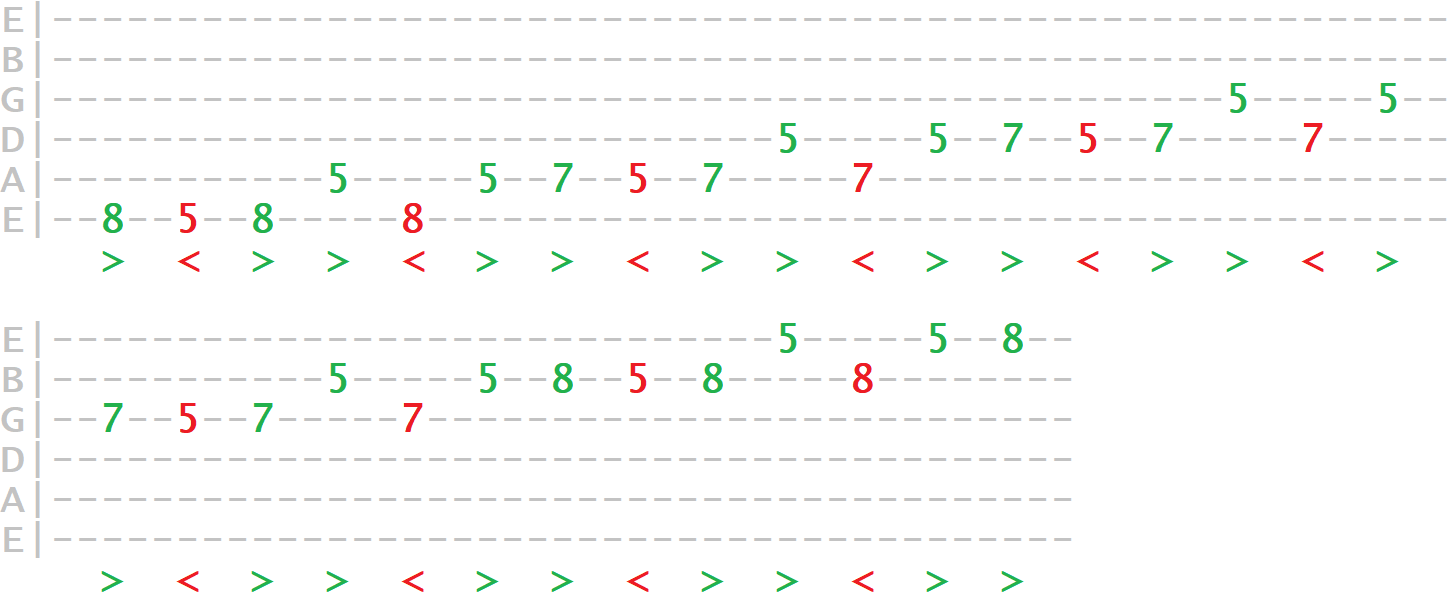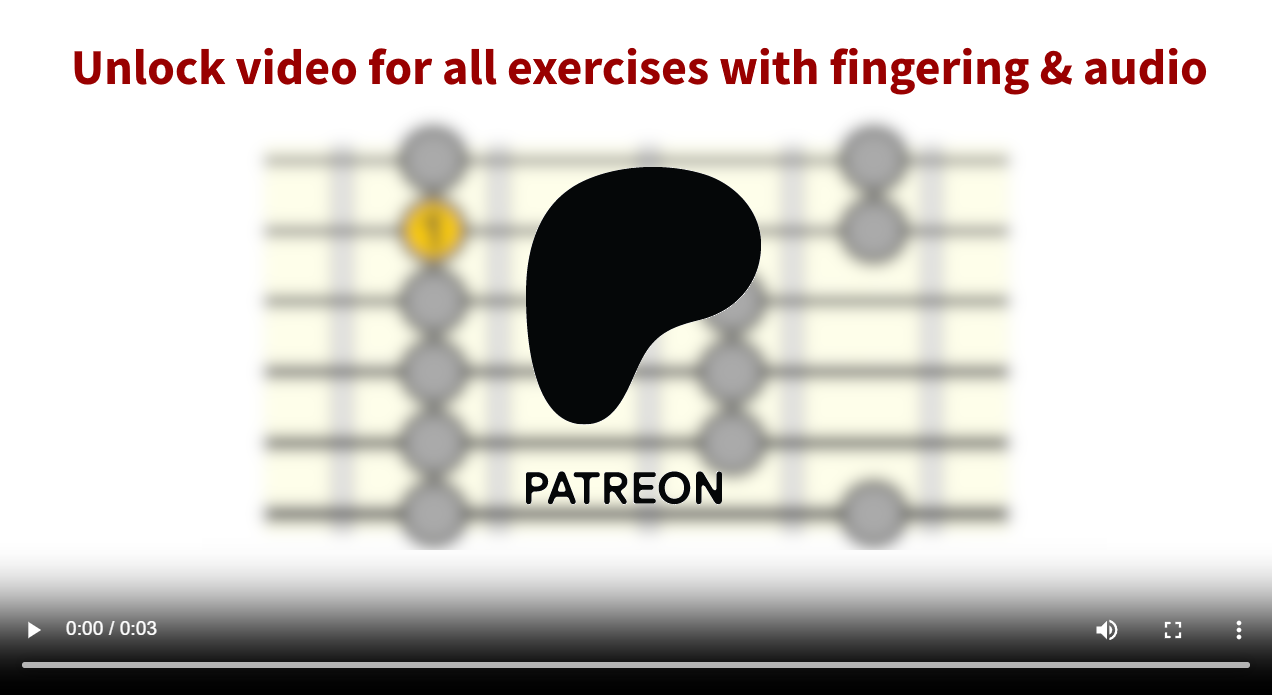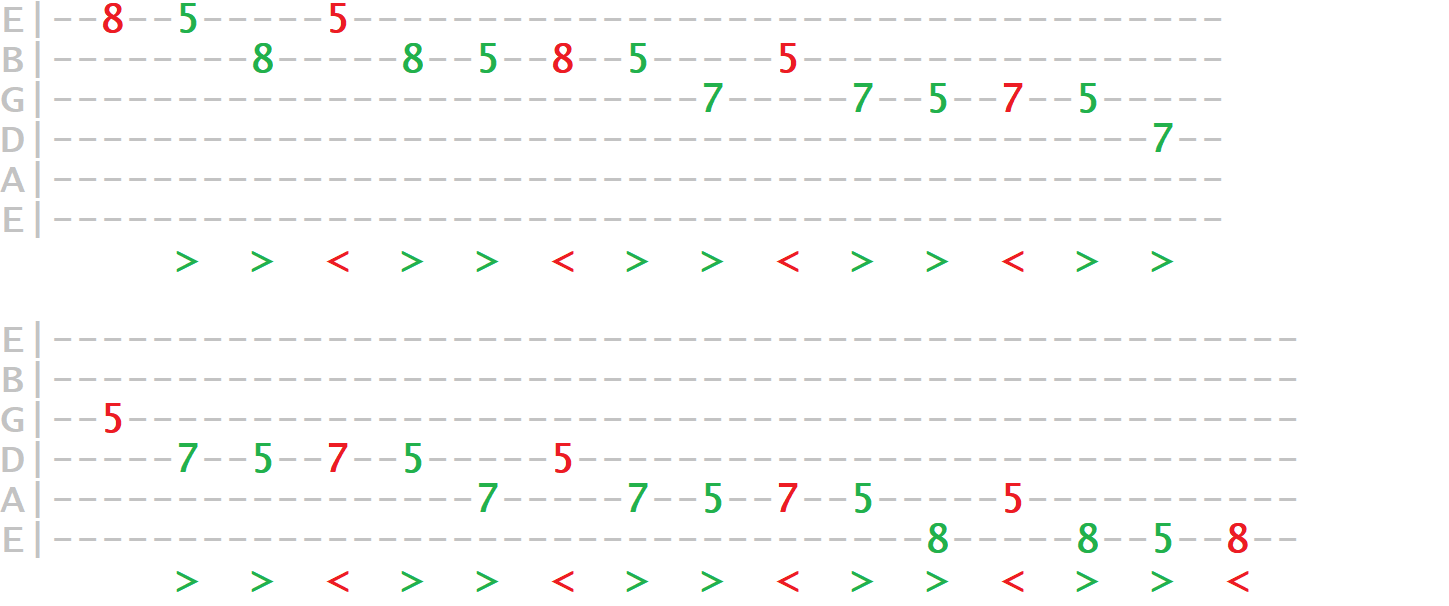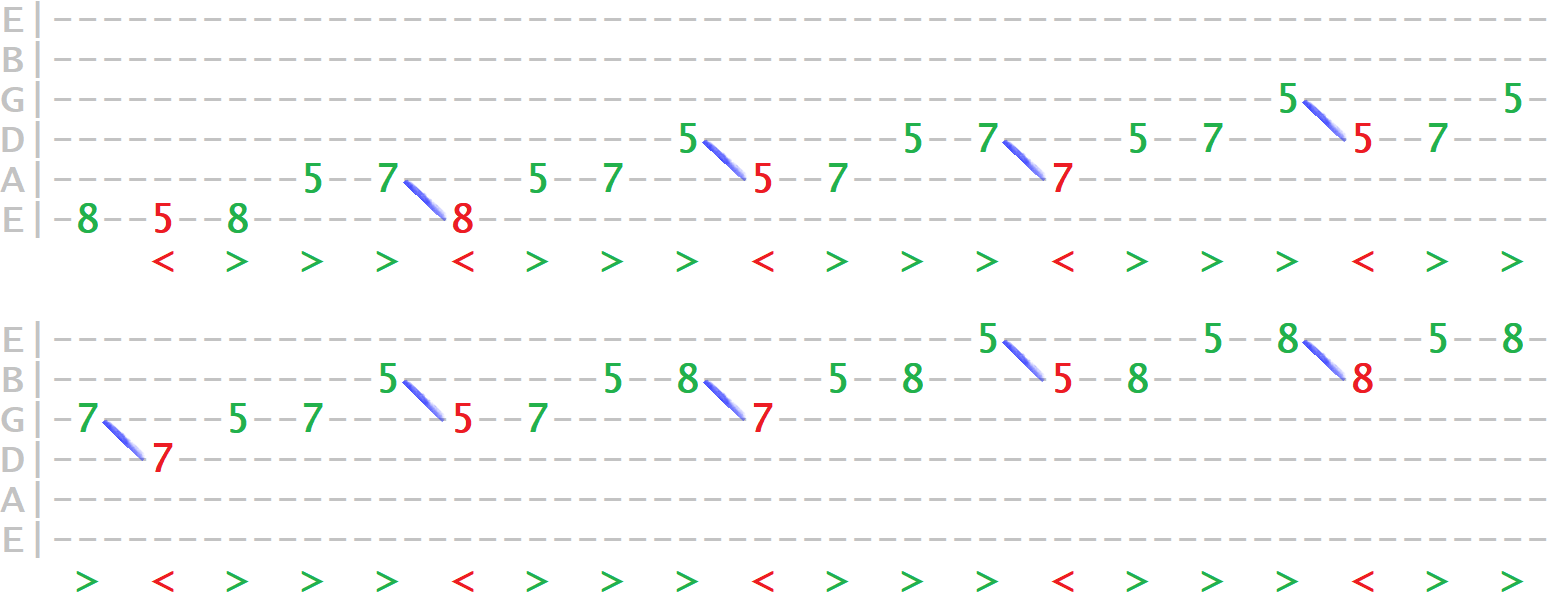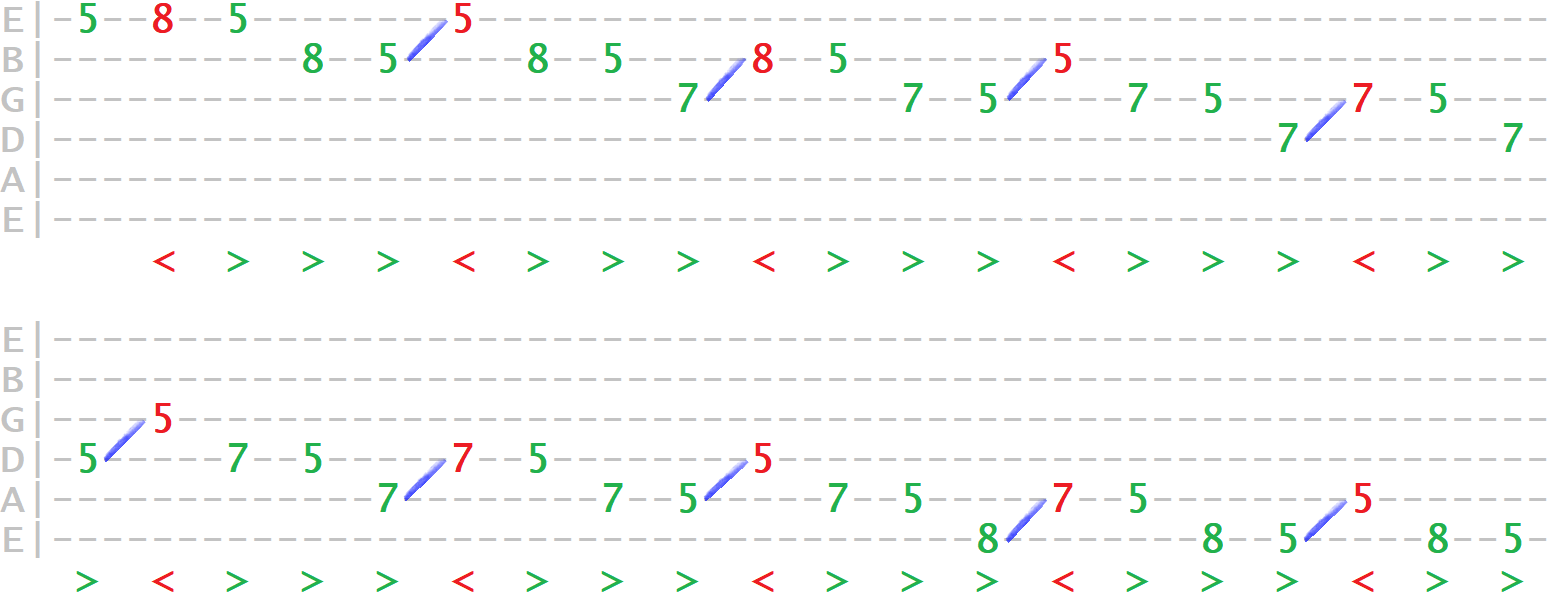The Patterns
For these examples, we'll be referencing two common scales - major pentatonic (which can also be minor depending on where you position it) and the seven-tone (heptatonic) major scale.
Both scales will be referenced on a C tonic/root, which would also work on their relative A minor key tonic (i.e. C major and A minor are the same patterns).
Additionally, both scales and all the sequences below will work over any of the chords in the relative C major and A minor diatonic keys, whether as part of a chord progression or as an isolated chord...
C - Dm - Em - F - G - Am - Bdim
This is purely so you can start with the most familiar and versatile scales to try out these run sequences...
Pentatonic Scale
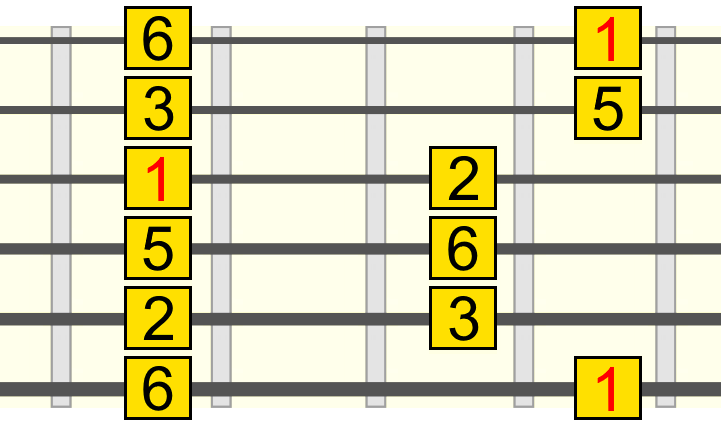
Heptatonic Scale
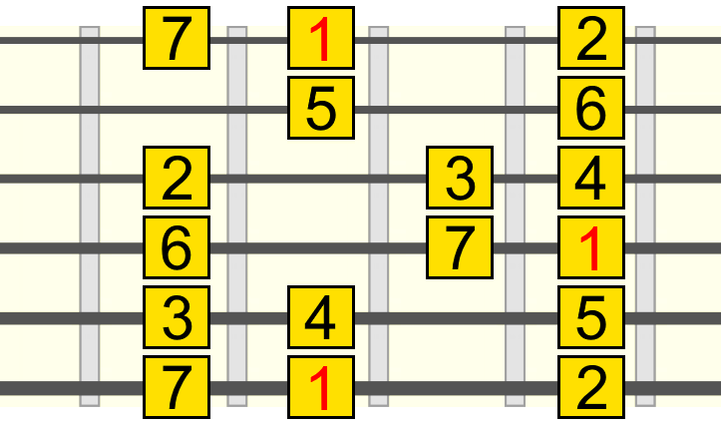
We're initially using what are known as "box patterns" to keep things relatively simple. But feel free to challenge yourself in applying the below sequences to other patterns, such as three-notes-per-string, and also other scales.
Different pattern, same sequence.
Exercise Set #1 - Scale Runs
Scale runs are simply where we ascend up or descend down a scale pattern in sequential and perhaps staggered steps. Along with arpeggios ("vertical" movements), scale runs allow us to inject bursts of cascading melodic colour into our solos.
Think of runs as playing a given scale in a step-wise sequence (e.g. note 1 up to 7 or 7 down to 1), but typically with interruptions - "step backs" or "skips" - a back and forth momentum to make them sound more creative and dynamic. There are different sequential ways of achieving this downward or upward cascading effect.
Exercise 1
In the sequence below (in the diagrams above the tablature), each number represents an interval from within the scale (e.g. the intervals of major pentatonic being 1 2 3 5 6)
Think of the sequences as involving "steps forward" (❯) and "steps back" (❮). "Forward" means the ultimate trajectory of travel, whether ascending or descending, which you'll see on the tablature.
For example, below is how a "two steps forward, one step back" run would play out starting on the pentatonic scale's tonic (use the tabs to switch between ascending and descending runs).
Note that we start with a step back on the ascending example, but then continue with "two forward, one back"...
Pentatonic
Side note: Remember, you don't have to start the run on the scale's tonic. You could start on any degree and continue the sequence from there. You also don't have to play through a full, six-string sequence. You could isolate this sequence on two or three strings, for example, and incorporate it into a different kind of movement or phrase.
These exercises are purely about learning a sequence (e.g. two steps forward, one back) that we can re-use with any scale pattern and in any playing situation.
Let's now try the same sequence using the seven-tone major scale.
Again, with the ascending sequence, we just take an initial step back at the beginning (personally I think it sounds better), but from then on it's the same "two forward, one back" momentum...
Heptatonic
Exercise 2
This run sequence can be thought of as "four (initially three) steps forward / two back". So we're dancing back and forth a little more this time, but still in a step-wise, linear fashion...
Pentatonic
Heptatonic
Exercise 3
This sequence involves more prolonged, rolling forward and back movements (five forward, three back)...
Pentatonic
Heptatonic
Exercise 4
Something a little more challenging!
This time we're involving differing numbers of steps forward and back within the repeating sequence. Specifically: three forward, two back, two forward, one back. Once up to speed, this creates a more intricate and pulsing rhythm...
Pentatonic
Heptatonic
Exercise 5
We're now going introduce note/step skipping into our sequences. Before, we were moving back and forth in a linear, step-wise fashion. This time we're jumping over various scale tones as we ascend or descend a sequence.
These jumps squeeze even more melodic colour and technical intricacy from the scale.
In the charts/tabs below, a jump/skip is marked in blue...
Pentatonic
Heptatonic
Exercise 6
A little more "back and forth" action on the skipped tones...
Pentatonic
Heptatonic
Exercise 7
Let's throw in some more linear repetition, punctuated by the jumps...
Pentatonic
Fingering Help! If we're in a situation whereby we need to use the same finger for two adjacent strings (i.e. moving to an adjacent string on the same fret), we can use a technique known as "rolling".
This is where we use the finger tip to fret the lower string and then "roll" the tip back to fret the higher string (vice versa if you're moving down between strings). For example...
The tip frets the 2nd string...
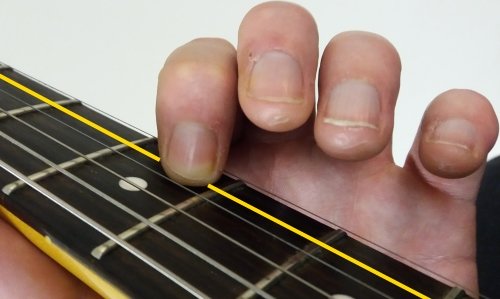
We roll the tip back to fret the 1st string...
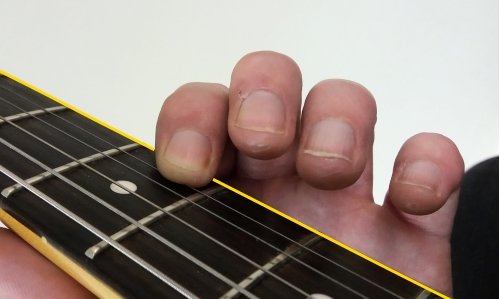
Reverse this if moving from 1st to 2nd string - flat rolls to tip. This technique takes some practice, but it will allow you to make those scale jumps in single fret situations, so it's worth the effort.
Heptatonic
Exercise 8
Here we're involving a larger jump back, this time skipping back over two steps in the scale. These "double skips" are marked in the diagrams as a double arch.
Pentatonic
Heptatonic
Exercise 9
A slightly more challenging variation on the previous exercise, involving both a double back skip and single forward skip. Here we also introduce string skipping to accommodate the double step skip in certain parts of the pattern...
Pentatonic
Heptatonic
Exercise 10
If you've made it this far, impressive!
This final exercise has more of a "vertical" (arpeggio-like) feel, because we're forming two double skips and one back skip in the repeating sequence.
An example (along with chordal arpeggiation) of how we can make scale movements sound less narrowly linear, while still using all the colours of the scale...
Pentatonic
Heptatonic
Frequently Asked Questions
Feel free to use the comments form at the bottom of this page for any more in depth questions you might have with scale exercises, practice techniques and scale navigation. But let's first quick fire some common queries on this topic.
Select the question to reveal the answer...

